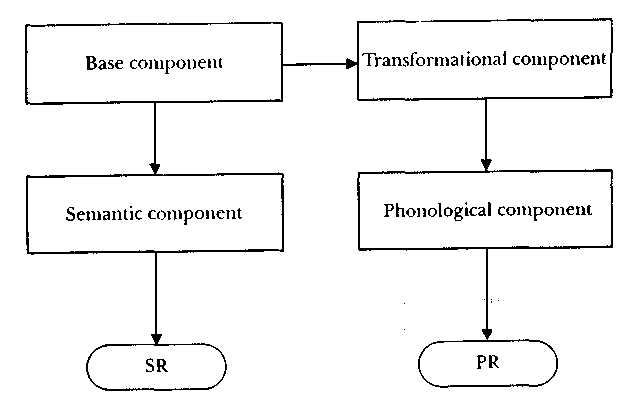
- •Chapter 7
- •7.0 Introduction
- •202 The formalization of sentence-meaning
- •204 The formalization of sentence-meaning
- •206 The formalization of sentence-meaning
- •208 The formalization of sentence-meaning
- •210 The formalization of sentence-meaning
- •212 The formalization of sentence-meaning
- •214 The formalization of sentence-meaning
- •216 The formalization of sentence-meaning
- •218 The formalization of sentence-meaning
- •220 The formalization of sentence-meaning
- •7.5 Montague grammar
- •224 The formalization of sentence-meaning
- •226 The formalization of sentence-meaning
- •7.6 Possible worlds
- •228 The formalization of sentence-meaning
- •230 The formalization of sentence-meaning
- •8.0 Introduction
- •8.1 Utterances
- •8.2 Locutionaryacts
- •9.0 Introduction
- •9.1 Text-sentences
- •9.6 What is context?
212 The formalization of sentence-meaning
phonological representations can be thought of as part of the competence which underlies speech; spoken forms can, however, be transcribed into another medium as written forms, and conversely; the central and essential part of a language - its grammar and associated lexicon - is therefore, in principle, independent of its phonological system. Meaning, on the other hand, is not a medium (physical or non-physical) in which a language is realized. One can argue about the psychological or ontological status of meaning; one can argue as to whether the notion that meaning exists, or can exist, independently of the existence of language-systems (or, more generally, of semiotic systems, including languages) is justifiable; but whatever view we take on such questions, there can be no doubt that the relation between meaning and the language which encodes it is different from the relation between sound and the language which can be realized in it. Neither the use of

Figure 7.1 The standard theory of transformational grammar. The deep structure of a sentence is the output of the base component and the input to both the transformational component and the semantic component; the surface structure of a sentence is the output of the transformational component and the input to the phonological component. 'PR' stands for'phonological representation' and 'SR' for 'semantic representation'.
7.3 Deep structure and semantic representations 213
the term 'representation' in both semantics and phonology nor the input-output symmetry of the left-hand and right-hand sides of the diagram in Figure 7.1 should be allowed to obscure this difference.
So much, then, for phonological representations and, for the moment, semantic representations. The base component, it should be noted, contains, not only the non-transformational, categorial, rules of syntax, for the language in question, but also its lexicon, or dictionary. And the lexicon provides for each lexeme in the language all the syntactic, semantic and phonological information that is necessary to distinguish that lexeme from others and to account for its occurrence in well-formed sentences. The base component, then, generates a set of deep structures, and the transformational component converts each of these into one or more surface structures.
I said earlier that deep structure is more intimately connected with meaning, and surface structure with pronunciation. Figure 7.1 makes this point clear by means of the arrows which link the several components of the grammar. All the information required by the semantic component is supplied by the base, and therefore is present in the deep structure of sentences; all the information required by the phonological component is present in the surface structures that result from the operation of transformational rules. As far as the relation between syntax and semantics is concerned, Figure 7.1 expresses the famous principle that transformations do not affect meaning; there is no arrow leading from the transformational to the semantic component.
This principle is intuitively appealing, provided that 'meaning' is interpreted as referring to propositional content: it is less so, if (i) sentence-meaning is held to include thematic meaning and what is encoded in difference of mood and sentence-type and (ii) corresponding sentences which differ grammatically in thematic structure, mood or sentence-type are held to be transformationally related and to share the same deep structure (see Chapter 6). The principle that transformations do not affect meaning implies that any two, or more, sentences that have the same deep structure will necessarily have the same meaning.
